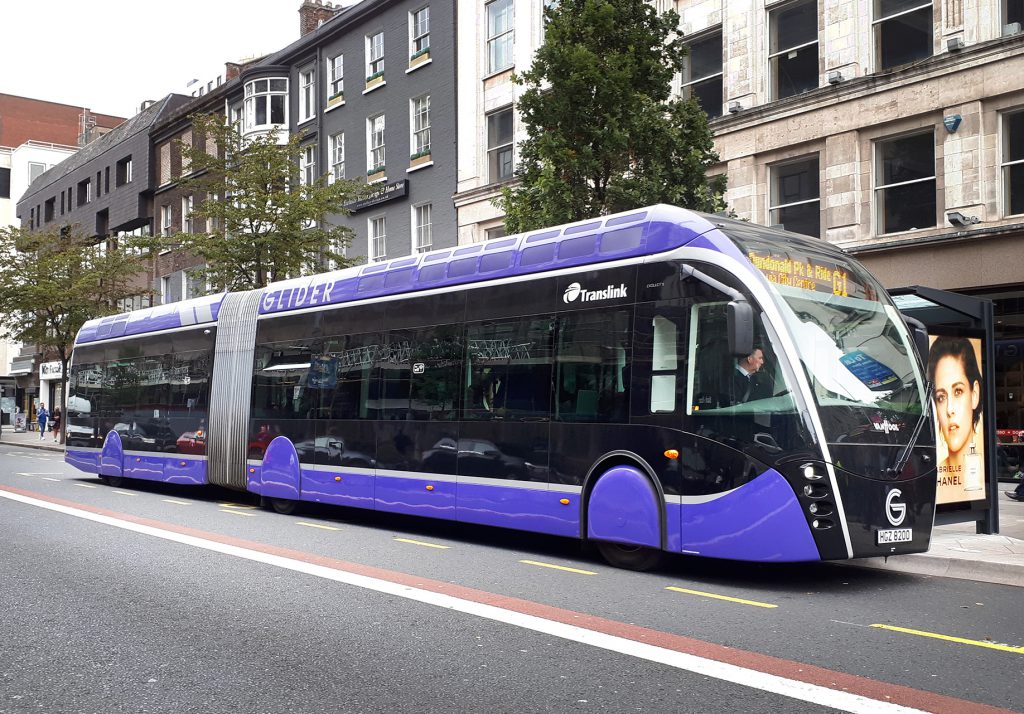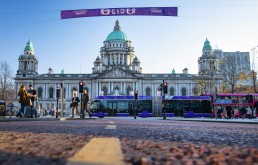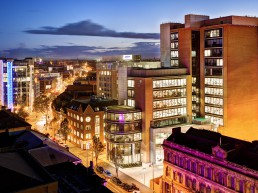During its first year of operation, the Belfast Rapid Transit Glider service generated more than 2 million additional passenger journeys compared to previous bus journeys along the same route.
This is an increase of more than 30%, resulting in 1.67 million fewer car journeys between September 2018 and September 2019, reducing congestion and enhancing city air quality.
Glider’s popularity has contributed to the highest public transport usage in Northern Ireland in more than 20 years. Overall, there were 84.5 million passenger journeys across the region in 2018-19.
The 105-person Glider buses connect east and west Belfast, and also link the Titanic Quarter to the city centre. They operate every seven to eight minutes throughout the working day, along more than 100 Glider halts. Each halt has Kassel kerbs that allow Glider vehicles to align with the footpath to ensure quick and safe boarding and alighting.
The 18 metre long Van Hool vehicles use diesel-electric hybrid engine technology, emitting low noise, low vibration and low levels of pollutants. This has resulted in a 90% reduction in NOx and particulate matter emissions, and 10 to 40% improvement in fuel efficiency compared with current double decker buses in Belfast.

Glider vehicles have onboard information screens providing real-time journey information, and audio visual next halt and destination announcements. Free on-board Wi-Fi and USB charging facilities are also available.
Passengers use a new ticketing system, with ticketing machines and validators, which speeds up getting on and off the vehicle. Cycle parking and park and ride facilities are also available at key locations.
The Northern Ireland Department for Infrastructure has invested £90m in the Belfast Rapid Transit Glider service with the aim of encouraging people to use public transport, reducing public transport times by 25%, and providing quick, modern and efficient access into and across the city.
For more information, visit www.translink.co.uk/usingtranslink/introducingglider





